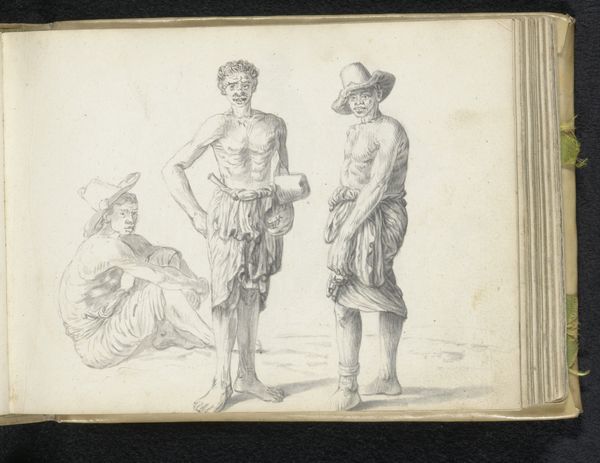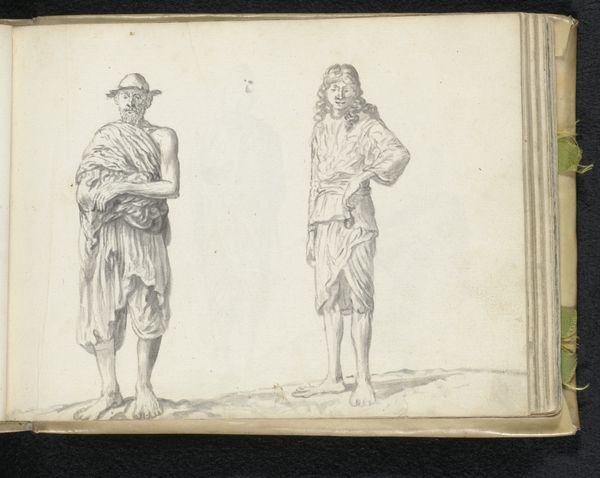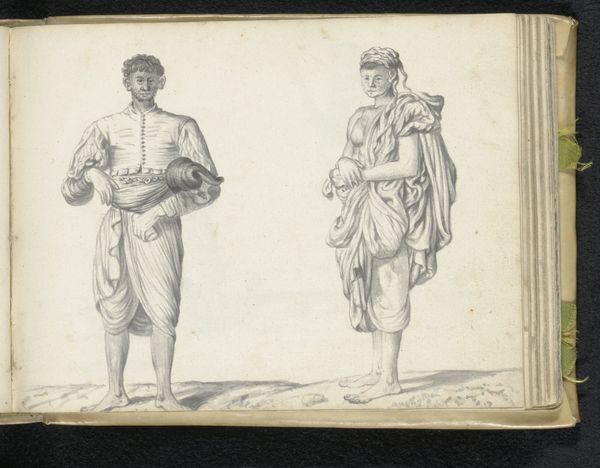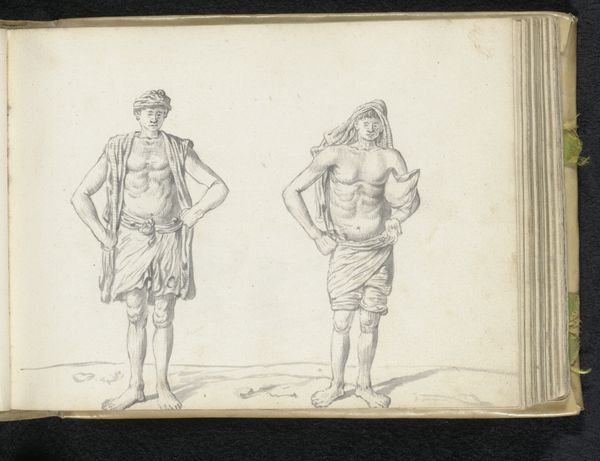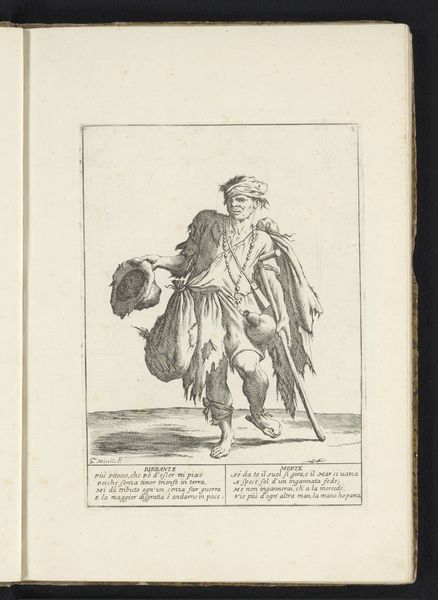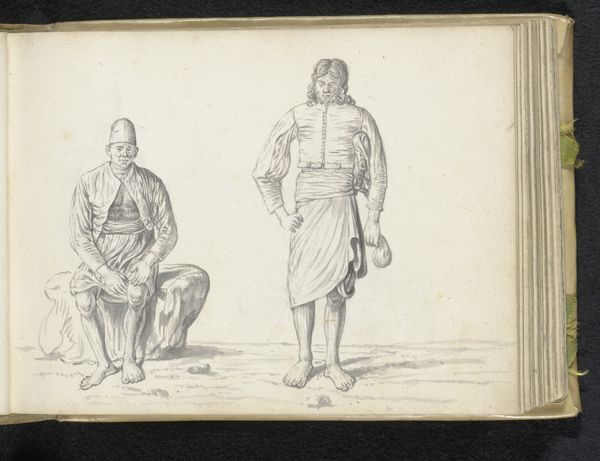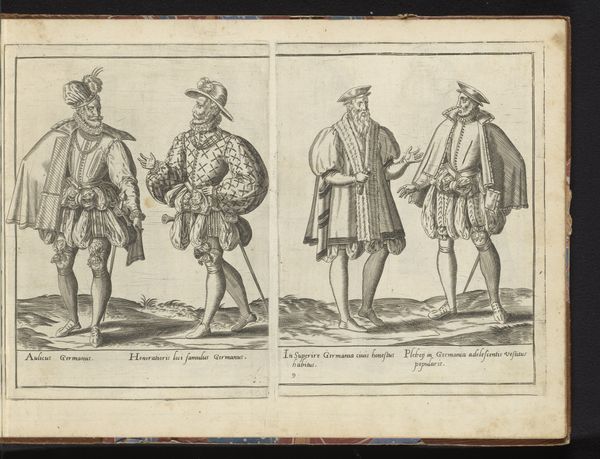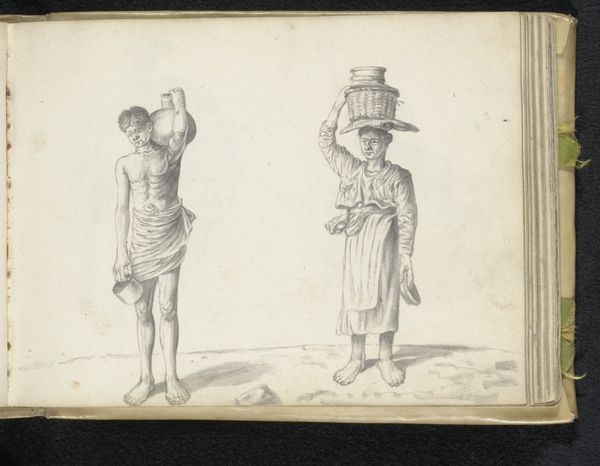
drawing, paper, pencil
#
portrait
#
drawing
#
figuration
#
paper
#
coloured pencil
#
pencil
#
genre-painting
Dimensions: height 148 mm, width 196 mm
Copyright: Rijks Museum: Open Domain
Curator: Here we have Esaias Boursse’s "Two individuals", a drawing from 1662, rendered in pencil on paper. Editor: Intriguing. The starkness of the pencil on paper creates an almost ghostly, ethereal feel. I am curious, what kind of commentary was the artist trying to give in a historical context? Curator: Boursse's choice of medium here is crucial. Pencil drawings were often preparatory studies. This might be a page from a larger sketchbook, indicative of the artist's daily practice and observation of the people around him. This challenges the notion of the artwork as solely a finished, polished product. Editor: Yet, the formal composition is quite considered. Note the placement of the figures—one draped and contemplative, the other relaxed and posed. The interplay of light and shadow is delicate but deliberate, giving a classical, almost sculptural presence despite the simple material. The contrapposto stance is even implied with the figure on the right, hand on hip, nonchalantly propped as a display of poise. Curator: Exactly! It speaks to the growing urban culture of the Dutch Golden Age, where dress and social status were becoming increasingly important. We can glean hints of class and even regional origin from their garments. Look closely at the layering in the robes. How it affects both figure. Editor: Yes, the drawing's limited palette allows the emphasis to lie in line and form. Notice how effectively the shading defines the volume of their robes, creating visual texture through a stark arrangement of darks and lights. It brings dynamism to the forms. Curator: And consider the production of pencils themselves in the 17th century. The graphite would have been a relatively new and valued material, carefully mined, processed and traded. Boursse’s access to it would suggest a certain level of professional standing within the artistic community of the time. Editor: Indeed. But I’m most struck by the way Boursse manages to suggest personality with so little. Look at the gesture of the man on the left, fingers to his lips, hinting at secrecy or introspection. And then the casual stance of the man to the right, that's the expression of authority. The expressions are enigmatic but there is no way we can really tell what they may signify. Curator: Examining this drawing allows us to understand the day-to-day lives and material realities of 17th-century Dutch society through an intimate lens. Editor: And, regardless of the work's initial intention, it's still fascinating how Boursse’s mastery of form allows him to express these profound nuances with such elegant simplicity.
Comments
No comments
Be the first to comment and join the conversation on the ultimate creative platform.
